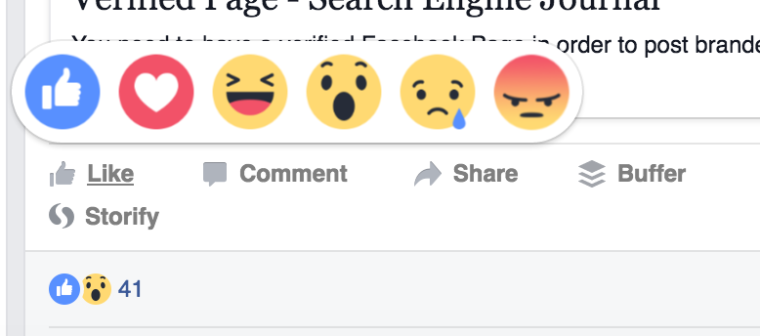After years of the echoing cry for a “Dislike” button on Facebook, at the end of February, Facebook finally launched alternatives to the “Like”. While not a thumbs-down, per se, the new Facebook Reactions offer the ability for a user to respond to a post with a Like, Love, Haha, Wow, Sad, or Angry emoticon.
But how are these reactions integrating into the day-to-day of Facebook responses?
SEJ SUMMIT. For SEOs. By SEOs.
Join digital marketing experts from Google, Grainger, The Home Depot and more in Chicago this June.
Join digital marketing experts from Google, Grainger, The Home Depot and more in Chicago this June.

Quintly, in their Social Media Analytics Blog, recently published a study on Facebook interaction since the launch of Facebook Reactions. After analyzing 130,000 posts, the study found Facebook’s new Reactions are rarely used in comparison to the tried-and-true Like—regardless of audience size.
“On average Facebook Reactions have low significance,” the study reported after announcing 76.4% of posts analyzed were Liked compared to another interaction.
Fourteen-percent of interactions studied were Shares and 7.2% were comments—leaving a small 2.4% “Other” to include the five new reaction options.
 The study also found:
The study also found:- Most interactions were with the positive Reactions
- The Love button is the most used of the new Reactions
- Videos receive 40% more Reactions than image posts

In the end, Facebook Reactions may provide businesses great benefits—such as better means for “Sentiment Analysis” and a more in-depth look at how readers are perceiving posts—but it’ll be interesting to see how marketers will encourage users to click on more than that iconic blue thumbs-up.
Source:https://www.searchenginejournal.com/quintly-publishes-facebook-reactions-study/163145/
Source:https://www.searchenginejournal.com/quintly-publishes-facebook-reactions-study/163145/
No comments:
Post a Comment